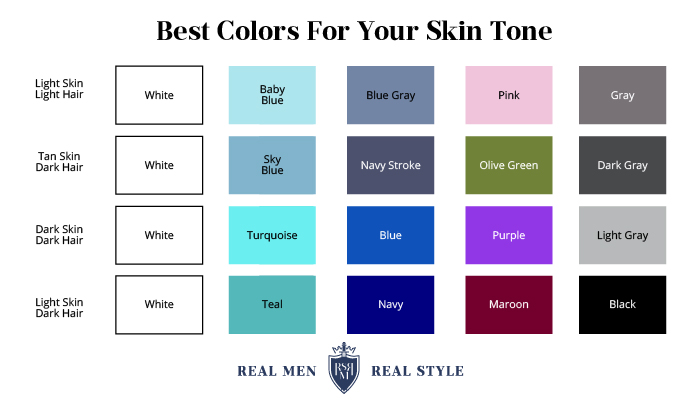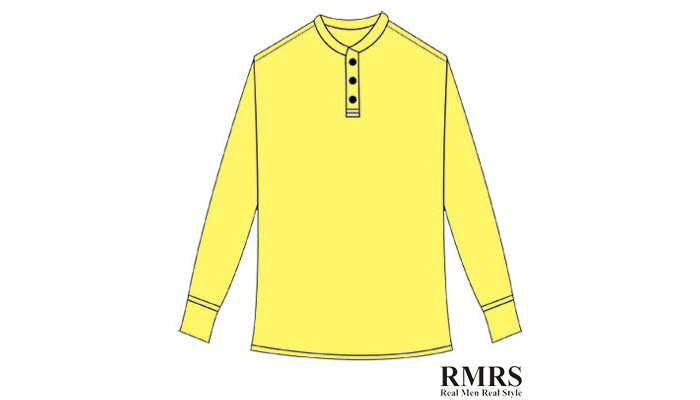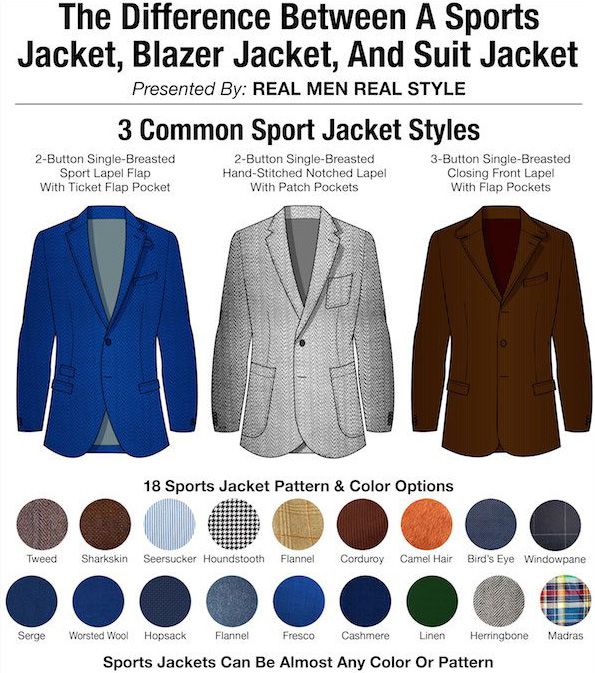A MINIMALIST wardrobe is one that gives you…
MAXIMUM style and versatility…
with the MINIMUM number of clothing pieces.
This means:
- You always know what to wear
- You get more outfits from fewer pieces of clothing
- You never waste money on clothes you won't wear
- You shun quantity to choose quality
So let's get into the seven men's wardrobe essentials. We'll start at the bottom and work up…
1. Versatile Footwear – The Right Shoes For the Job
Every man needs at least one pair of casual shoes, one pair of dress shoes, and one pair of boots.
Casual Men's Shoes
When it comes to casual shoes you've got a lot of options.
Sneakers are a good pick – but if you're only going to have one pair of sneakers, what color should they be?
White sneakers work with a wide variety of outfits – but they really show the dirt.
If you want to avoid scuff marks go for a solid black sneaker with a black sole.
Or if you want to stand out from the crowd, pick a two-tone sneaker in two neutral colors, like blue and brown. It'll go with everything. A navy suede looks particularly great with jeans.

If you want a sneaker you can wear with smart outfits, the key's in the sole – it should look thin and delicate rather than chunky.
Or if you want to go a little bit smarter still, get something in a classic dress shoe design but a more casual fabric like suede or perforated leather.
Men's Dress Shoes
This brings us to dress shoes. The question to ask when choosing your first pair of dress shoes is, ‘How dressed-up am I going to get?'
If you don't dress up much, a casual loafer is a great option.
If you wear a suit sometimes, you want a dress shoe that's going to work with your suits. Double monks are a stylish option that stands out.
If you wear suits often, your first dress shoes should be the classic formal shoe – the black Balmoral Oxford.
Men's Dress Boots
Now let's talk boots. Again, there are tons of options, and it largely depends on formality.
For the suit-wearing city guy, consider a Chelsea boot.
If you're more of a jeans guy, maybe go with a chukka. Blue suede chukkas will get attention.
If you want a chunkier casual boot, look for something with a combat boot design. This looks great with jeans, and you can also dress it up with a sports jacket if you give it a nice shine.
2. Versatile Trousers – Five Easy To Match Pants
Next up on the list of men's wardrobe essentials are the right pants. There are a lot of options here too, so let's break down the details.
Start with two pairs of dark-colored denim. You can dress jeans up or down, making them incredibly versatile in most parts of the world.
It's very important to choose the best jeans for your body type and make sure they fit.
Next up you want two pairs of slacks. Here are some options to pick from:
Gray flannel is a great option for cooler climates. This will match pretty much any shirt, jacket, and pair of shoes in your wardrobe.
Khakis are more casual, but can work if they fit you well. Chinos are smarter, lighter-weight, and often made in lighter colors like tan, red, and blue.

Commuter pants are slacks in a hi-tech stretch fabric that you can wear on your cycle commute as well as at work. The key is to make sure they're not made in too casual a style.
Finally – you can have one pair of shorts. Just the one. Shorts are extremely casual and don't look good on most body types.
If it's hot where you live, instead of multiple pairs of shorts look at tropical weight wool trousers. They're just as cool and comfortable – and infinitely more stylish.
3. Seven Collared Dress & Casual Shirts
Every man should have at least seven collared shirts. These men's wardrobe essentials come in two flavors: dress shirts and collared button-downs.
Dress shirts are more formal and made to wear under a jacket. But how do you identify a dress shirt?
A dress shirt normally has no more than one pocket. It won't have epaulets or any other decorative features. It'll normally be in a solid color or a stripe or check.

Casual button-downs come in a wider variety of styles and patterns. You might see double pockets with buttons on the chest.
You might also see roll tab sleeves (sleeves with a buttoned tab to hold them in place when rolled up), epaulets, button-down collars, and contrasting fabrics on the placket, collar, and cuffs.
If you spend most of your time in suits and sports jackets, you probably want five dress shirts and two casual button-downs; if you're a more casual dresser go for five casual shirts and two dress shirts.
4. Five Non-Collared Casual Shirts
Your non-collared shirts include t-shirts and henleys. These are made from stretchy knit fabrics – unlike your collared shirts, you can't get them tailored to fit. So make sure you buy a size that actually fits your body type.
Don't wear graphic tees – they're ultra-casual and a very young man's style. Go for plain colors like black, white, navy, maroon, or dark green.
Try a v-neck to give you more of a masculine ‘v' silhouette. If you're in decent shape you can wear a well-fitted v-neck t-shirt by itself with nice trousers.

Henleys, a type of shirt with a buttoned placket in the front, are less common. You may not see them as men's wardrobe essentials – but they will help you stand out from the crowd.
Henley shirts come in short or long-sleeved versions. The long sleeve is more versatile because you can roll it up.
If neither of these shirt types is your style, you can always switch them out with polos.
5. The Perfect Jacket – Two Suits, Sport Jackets, or Blazers
Every man should have at least two of these three men's wardrobe essentials. If you wear a suit every day, of course, you're going to want more than just two.
So what's the difference between a suit, a sports jacket, and a blazer?
A suit is the most formal – it's a jacket and trousers made from the same material. In general, you'll see suits in darker colors.
Sports jackets come in a wide variety of lighter colors and in more rugged and textured fabrics. They're the most casual of the three and can be dressed down with jeans.
Blazers are in the middle. They come in darker colors, traditionally in navy and sometimes with gold buttons. They have a nautical feel, so you might see a little anchor on the buttons.
6. Two Coats – High Style & High Function Outerwear
You need two pieces of outerwear – one that's high style and one that's high function.
Your high function piece is there to protect you from the elements. If you live somewhere like Minnesota where there's extreme weather you'll want a parka.
If you're somewhere more temperate you just want a good functional jacket, such as a shell in a classic conservative color like black or tan, that you can throw over your suits to protect them from the rain.
Your ‘high style' piece of outerwear is the one that makes you feel like a million bucks.
Maybe it's a suede jacket or a racer leather jacket. It's not there to keep you dry – it's there to get you compliments.
7. Your Signature Accessories – Watches, Ties, Pocket Squares, Sunglasses, Belts
Let's start with the first signature accessory – your watch.
If you're a consultant wearing a suit multiple times a week, a simple dress watch with a plain dial and leather strap will look great with your jackets and formal outfits. Switch the strap out for a mesh or NATO strap in hot weather to dress it down on weekends.
You have a more casual style? Spend time near the water? Opt for a classic dive watch. You can dress it up with a sports jacket or dress it down with a t-shirt and shorts when you head to the beach. Easily one of my favorite styles!
Now let's talk about neck-wear.
If you only buy one necktie, make it a navy grenadine tie – it'll go with anything.
Grenadine is a textured open-weave silk that creates visual interest even in a plain color.
For your second tie pick something a little less formal, like a knit tie or a subtle pattern (pindot, a tiny dot pattern, also goes with anything). Darker colors like burgundy, dark green, and purple are most versatile.
You should also own at least one pocket square – preferably one per jacket so you can leave them in there and forget about them. Plain white is the most versatile and most formal.
Don't forget the accessory on your face – make sure you have a decent pair of sunglasses (and glasses if you wear them) that suits your face shape. Aviators and wayfarers suit almost every man.

Depending on the climate – you're probably going to want a hat in summer, winter, or both.
For summer try a straw fedora or linen baker boy cap. For winter a navy watch cap is your most versatile option – or for smart wear with a suit and overcoat, go for a classic felt trilby or fedora.
Pair your winter hat with a neutral-colored scarf and leather dress gloves.
You also need a smart belt (about 1.25″ wide, smooth and shiny with a simple tongue buckle) and a casual belt (1.5″-1.75″ wide, in a thicker and more matte leather).
Remember, never wear black leather accessories with brown leather or gold-tone metal with silver. Pick which you prefer and collect a matching set (or two).
Your List Of Men's Wardrobe Essentials
Got all that? I know it's quite a bit to remember, so let's break it down:
- Footwear – 1 pair of casual shoes, 1 pair of dress shoes, 1 pair of boots
- Pants – 2 pairs of dark denim, 2 pairs of slacks, 1 pair of shorts
- Collared shirts – 5 dress shirts and 2 casual button-downs, or 2 dress shirts and 5 casual button-downs
- Non-collared shirts – t-shirts and Henleys
- Suit, sports jacket, blazer – pick any two
- Outerwear – 1 high-function piece, 1 high-fashion piece
- Accessories – watch, 2 neckties, pocket square, eyewear, hat, gloves, scarf, belts
There you have it – your definitive list of men's wardrobe essentials. Hungry for more? Check out my definitive list of men’s home essentials.
Click Below To Watch The Video – 7 Minimalist Men's Wardrobe Essentials & How To Buy
The post 7 Minimalist Men’s Wardrobe Essentials & How To Buy appeared first on Real Men Real Style.


0 Commentaires